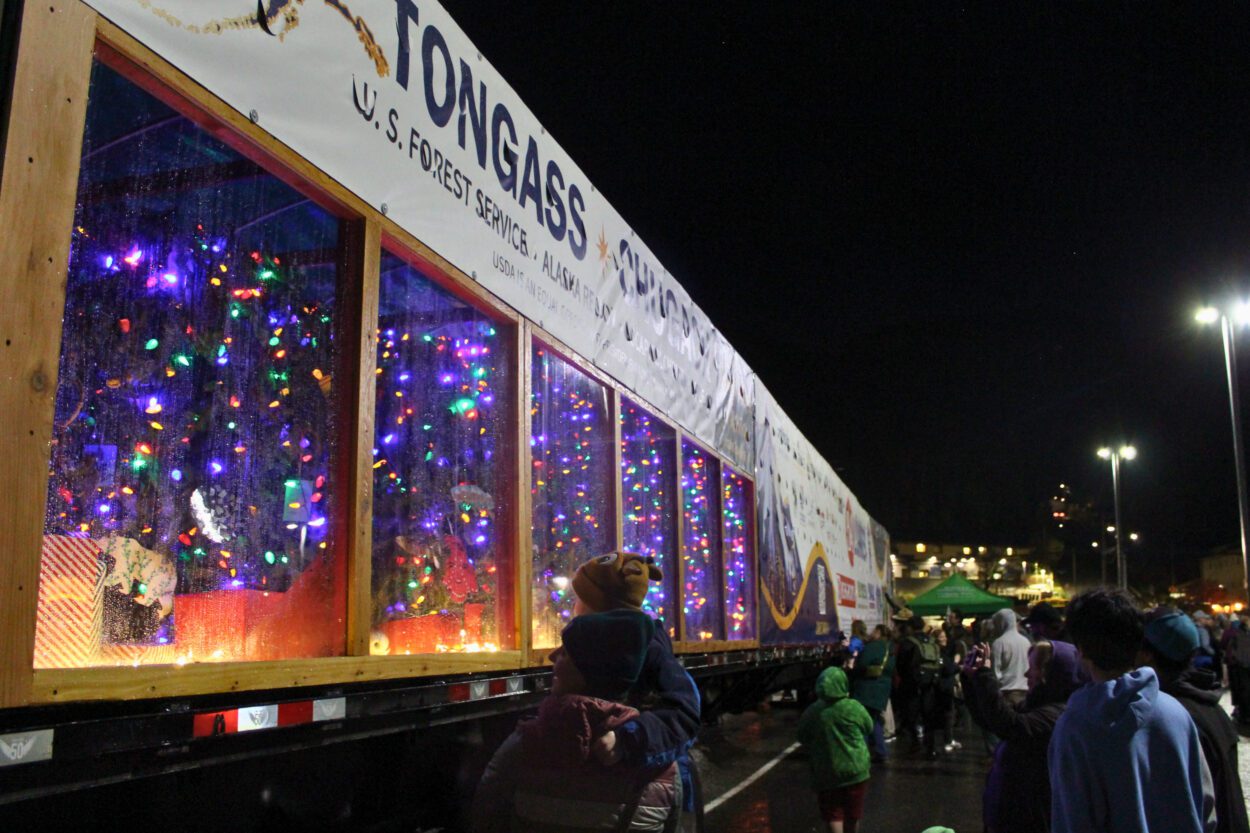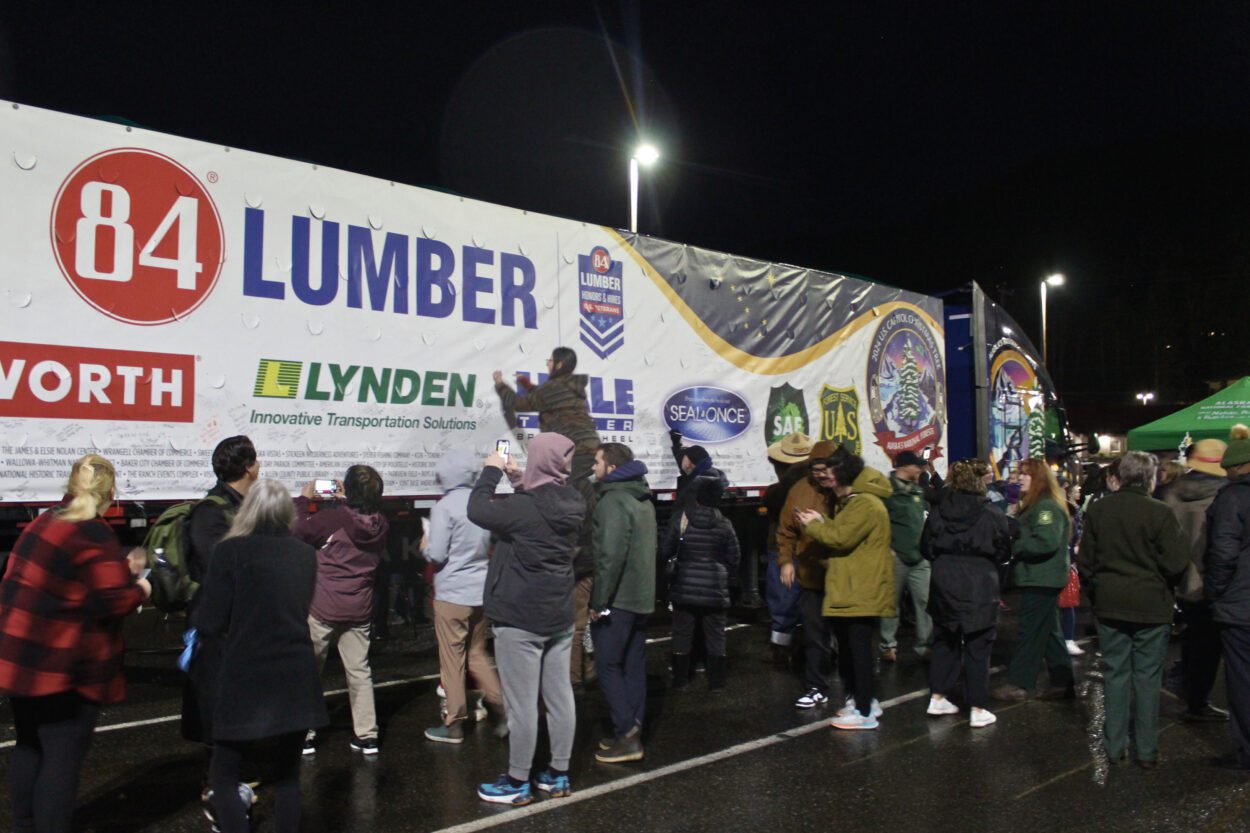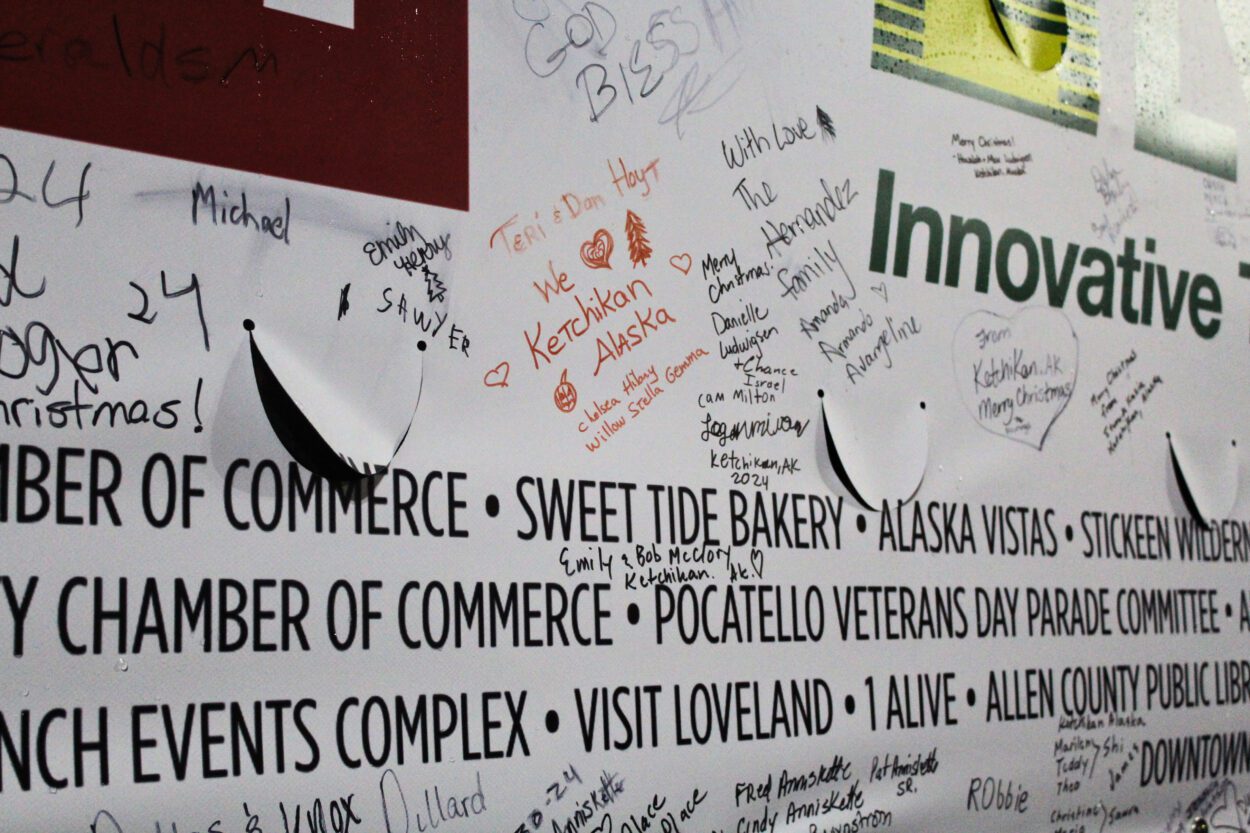
Hundreds of Ketchikan residents recently packed into a parking lot on a chilly Wednesday evening to send off a 74-foot Sitka spruce, on its way to the U.S. Capitol.
The massive tree was fully encased inside a tractor trailer, only visible through a few plastic windows on the back end. But that didn’t deter the impressively large crowd from forming a long line to sign the banners hanging over each side of the truck.
It’s the first Capitol Christmas Tree to come from the Tongass National Forest, and only the second from Alaska. The tree made a pit stop in Ketchikan as it began the long journey to Washington, D.C.
Twenty-five-year-old Max Ludwigsen got his turn with the sharpie as local band Dude Mountain played behind him. He said he came out for the event because of his connection to the island where the tree was harvested.
“This was cut on Zarembo Island, and I grew up hunting Zarembo,” Ludwigsen explained. “I was born and raised in Wrangell.”
Ludwigsen said he moved to Ketchikan back in grade school, but his family still hunts on the small island that lies between Wrangell and Prince of Wales Island.
“It’s pretty cool with us being, you know, not really a spot that people think about,” Ludwigsen said.

Each year, the “People’s Tree” is sourced from one of the country’s national forests. But in the more than half a century since the tradition began, America’s largest national forest hasn’t made the cut, until now.
The Tongass spans 17 million acres across the panhandle — nearly triple the size of the next largest national forest. That’s a pretty daunting haystack to search for the one perfect Christmas needle.
But Tom Roland was up to the task. He’s the tree team lead with the U.S. Forest Service, meaning he had the privilege of choosing the handful or so finalist trees to present to the Architect of the Capitol.
“Essentially what it comes down to is they want a 60 to 80 foot tall Christmas tree,” Roland said. “Exactly what you’re looking for in your living room.”
Maybe not exactly like your living room given it’s eight stories tall, but imagining a giant Christmas tree is simple enough. Even knowing precisely what you’re looking for though, where do you start in a forest twice the size of Maryland?
Roland said modern technology helped. They used lidar, which is sort of like radar, but instead of radio waves, it uses lasers to create detailed digital images. The team applied algorithms to existing scans of the forest to look for areas with favorable characteristics.
“So things like roundness of the canopy, number of returns on the lidar scan indicating a full crown, things like that,” Roland explained.
Once they found potential candidates, Roland said they used ground-based lidar to produce a 3D model of each tree. That way, the Architect of the Capitol’s office could get a look at every part of those trees without having to cut down and remove all the finalists.
That’s important, because unlike your tree at home, the People’s Tree doesn’t have the benefit of walls to cover up aesthetic imperfections.
“You don’t have a bad corner to hide it in. It has to be perfect on all sides,” said Roland. “And when your trees grow as a forest, that’s a challenge. Because a lot of the times when you’re growing in a forest setting, you end up with a side that’s bald or a side that’s missing branches.”
After more than a year of searching, the team found the perfect tree on Zarembo Island, where it was barged to Wrangell and then down to Ketchikan to kick off its whistle-stop tour through the Lower 48.

Terry Baker is the CEO of the Society of American Foresters, the primary sponsor making the US tour happen.
“Kind of being that facilitator that brings this whole thing together and helps people, you know, have some Christmas magic,” Baker said of his organization’s role.
Baker said there were a lot of partners who donated things like that giant tractor trailer, which minimized the tax dollars spent on the project. Those sponsors, like the people who came out to sign the banner, wanted to be a part of something bigger, he said.
The stop-and-go tour is about honoring the tree’s home state, but also letting the rest of the country join in on that community spirit.
“Being able to have signatures from every stop, and I think this tree’s going to have about 17 stops in the Lower 48, so all these communities across the country are going to be connected with Alaska, be connected with Ketchikan, be connected with Wrangell,” Baker said.
Once those banners collect signatures from around the country, they will be showcased during receptions in Washington, D.C., creating what Baker called “its own unique part of history.”
Michael Fanelli is the News Director at KRBD. He can be reached at michael@krbd.org.





